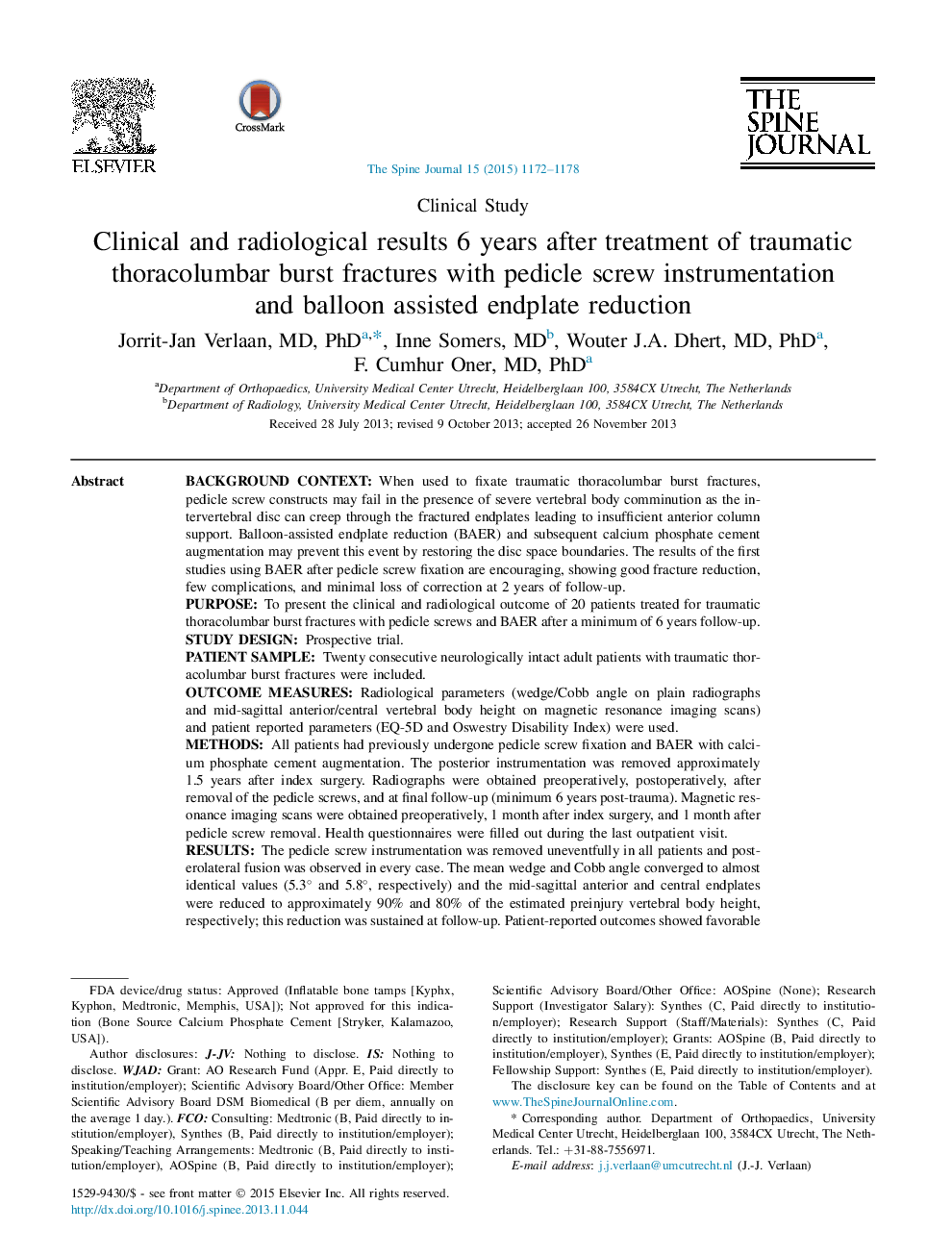| کد مقاله | کد نشریه | سال انتشار | مقاله انگلیسی | نسخه تمام متن |
|---|---|---|---|---|
| 6211873 | 1268561 | 2015 | 7 صفحه PDF | دانلود رایگان |
Background contextWhen used to fixate traumatic thoracolumbar burst fractures, pedicle screw constructs may fail in the presence of severe vertebral body comminution as the intervertebral disc can creep through the fractured endplates leading to insufficient anterior column support. Balloon-assisted endplate reduction (BAER) and subsequent calcium phosphate cement augmentation may prevent this event by restoring the disc space boundaries. The results of the first studies using BAER after pedicle screw fixation are encouraging, showing good fracture reduction, few complications, and minimal loss of correction at 2 years of follow-up.PurposeTo present the clinical and radiological outcome of 20 patients treated for traumatic thoracolumbar burst fractures with pedicle screws and BAER after a minimum of 6 years follow-up.Study designProspective trial.Patient sampleTwenty consecutive neurologically intact adult patients with traumatic thoracolumbar burst fractures were included.Outcome measuresRadiological parameters (wedge/Cobb angle on plain radiographs and mid-sagittal anterior/central vertebral body height on magnetic resonance imaging scans) and patient reported parameters (EQ-5D and Oswestry Disability Index) were used.MethodsAll patients had previously undergone pedicle screw fixation and BAER with calcium phosphate cement augmentation. The posterior instrumentation was removed approximately 1.5 years after index surgery. Radiographs were obtained preoperatively, postoperatively, after removal of the pedicle screws, and at final follow-up (minimum 6 years post-trauma). Magnetic resonance imaging scans were obtained preoperatively, 1 month after index surgery, and 1 month after pedicle screw removal. Health questionnaires were filled out during the last outpatient visit.ResultsThe pedicle screw instrumentation was removed uneventfully in all patients and posterolateral fusion was observed in every case. The mean wedge and Cobb angle converged to almost identical values (5.3° and 5.8°, respectively) and the mid-sagittal anterior and central endplates were reduced to approximately 90% and 80% of the estimated preinjury vertebral body height, respectively; this reduction was sustained at follow-up. Patient-reported outcomes showed favorable results in 79% of the patients. One patient required (posterior) reoperation due to adjacent osteoporotic vertebral body collapse after pedicle screw removal.ConclusionsBalloon-assisted endplate reduction is a safe and low-demanding adjunct to pedicle screw fixation for the treatment of traumatic thoracolumbar burst fractures. It may help achieve minimal residual deformity and reduce the number of secondary (anterior) procedures. Despite these positive findings, one in five patients experienced daily discomfort and disability.
Journal: The Spine Journal - Volume 15, Issue 6, 1 June 2015, Pages 1172-1178
